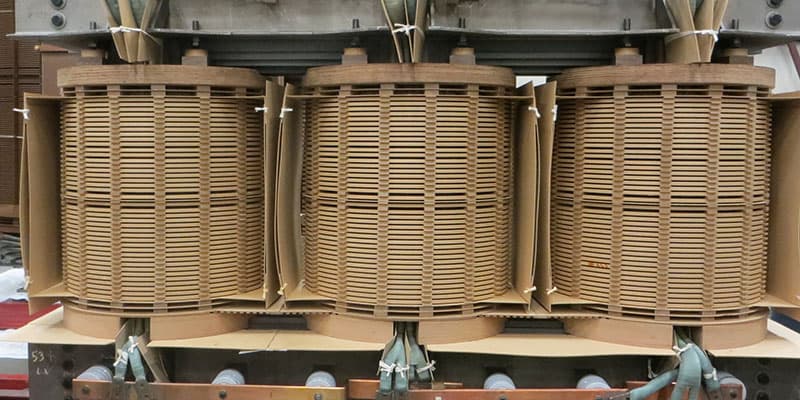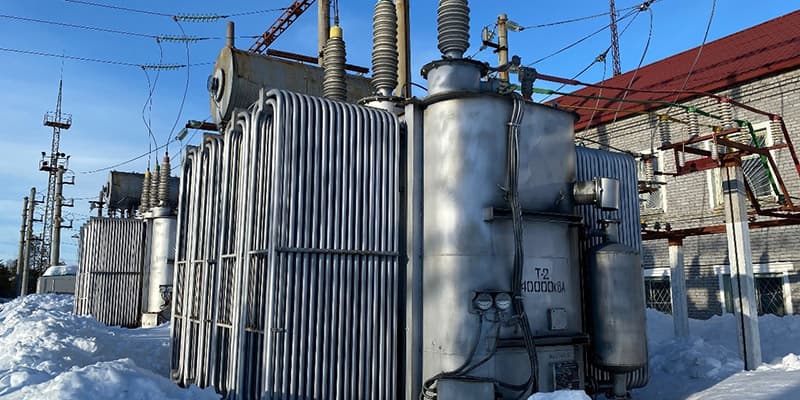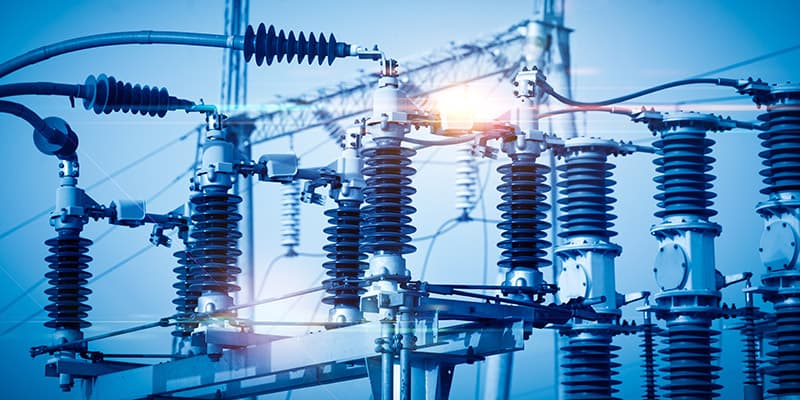The How & What of a Substation Transformer
If the 6-in. main water supply pipe from the city came straight into your house, your morning shower would be pretty weird. Water pipes go through simple transformations before feeding your shower, washing machine, and kitchen faucet. In a similar way, electrical power must be transformed from the power generation plant before you can make toast, watch the game, or charge your phone. Transformers do that work.
A few different types of transformers help move electricity from the generation plant to your home. A “step-up” transformer increases the voltage from the original power plant so electricity can travel long distances through power lines with minimal power loss. Before getting to your business and home, that high-voltage power goes through a step-down transformer to reduce the voltage and make it safe for you to make toast.
The Law of Transformers
The heart of any transformer is a steel core wrapped with windings of copper wire. From huge oil-cooled units to small devices in an audio speaker, transformers work in the same way, following Michael Faraday’s 1830’s-era discovery of electromagnetic induction. We have improved materials and processes, but Faraday’s law of induction still applies.
Substation Transformer Components
We’ll look closely at substation transformers that step down power, though step-up and step-down transformers have many of the same components.
Resource: Suppliers use in remanufacturing substation transformers
Steel Core
A transformer’s core is assembled by stacking thin sheets of high-grade steel that are separated by thin layers of insulating material. When made using cold-rolled, grain-oriented steel (like most transformer cores built since 1960), these sheets create a low reluctance path for the magnetic field and can last for decades. The sheets do not degrade significantly during normal use, so when a transformer needs to be remanufactured they can be reused. Because of the growing cost of such high-grade steel, reusing existing core steel saves time and money compared to buying a new transformer with a new core.
Windings
A conventional transformer uses two windings of conductive material: a primary winding and a secondary winding—back to Faraday’s Law—wound around a steel core. The windings can be made from either copper or aluminum, but copper is most often the better choice in larger transformers because it is stringer and a better electrical conductor. The amount of copper in a transformer depends on its size and type. The transformers you see mounted on utility poles, for instance, might have 50 pounds of copper inside, whereas a large substation transformer might have a several thousands of pounds of copper inside. When you need to remanufacture a transformer, new copper windings are typically used and the existing copper is recycled.
Coolant
Most substation transformers rely on an electrical grade insulating liquid to cool the copper windings and core. Mineral oil has been the most common insulating liquid for many decades, but natural and synthetic ester liquids are becoming more common. The insulating liquid needs to remain stable at extended periods of high-temperature contact with the windings while maintaining its dielectric strength, which is a measure of its integrity. Contamination is a sign of trouble. Transformer oil is tested periodically to ensure it retains its ability to cool and insulate reliably.
Tank
A transformer’s copper-wound core and cooling oil resides in a sealed tank. While securely holding a transformer’s coolant, the tank also covers the core and windings to protect them from potential damage such as weather, environmental contaminants, and curious critters. The tank’s exterior provides solid mounting points for the transformer’s accessories. A tank manufactured decades ago can continue to serve a remanufactured transformer, and its reuse can provide manufacturing and installation efficiencies.
Terminals & Bushings
Electric cables enter and exit a transformer at high-voltage and low-voltage terminals, and each terminal’s bushing acts as an insulator to guide the power cables through the tank wall. Bushings can be a potential weak point on a transformer by allowing moisture into the tank, or due to their exposure to lightning strikes and other environmental stress. Bushings are tested periodically, and replacements can be expensive, with some costing tens of thousands of dollars.
Tap Changer
A transformer’s voltage output needs to be kept at the right level for its service needs. That’s the function of a Tap Changer, a mechanical device that changes the number of active turns in a winding, effectively altering the ratio of the windings around the steel core to either raise or lower the voltage supplied to the user. There are two types of commonly used tap changers – the de-energized tap changer (DETC) and the load tap changer (LTC). As its name implies, a DETC is designed to operate when the transformer is fully de-energized from any source. Conversely, an LTC is designed to operate while the transformer is loaded without any interruption in power delivery. With moving parts and frequent use, an LTC requires regular inspection and maintenance. Both DETCs and LTCs are rebuildable and can be refurbished and reused in a remanufactured transformer, saving you thousands of dollars.
Radiators
Transformers generate heat, and externally mounted radiators help transfer that heat from inside the transformer to the ambient air surrounding the transformer. Cooling fins and fans can be added to maintain appropriate operating temperatures inside the transformer. Depending on its size, a transformer can have multiple radiators, and they can cost several thousands of dollars each. Corrosion from water or other oil contaminants can cause radiators to leak, but in a well-maintained transformer, radiators will provide a long service life.
Transformer Service Life
Knowing a transformer’s component structure and maintaining an inspection protocol, you can expect your substation transformer to provide reliable service for 20 to 40 years; some will live even longer. And because of remanufacturing, many of these components will continue to serve your customers for many more years. See how transformer remanufacturing can save you time and money.
.png?width=295&height=96&name=Untitled%20design%20(8).png)





